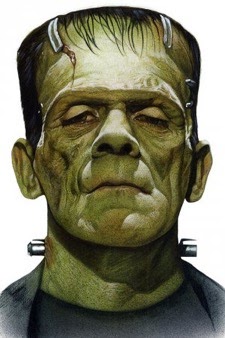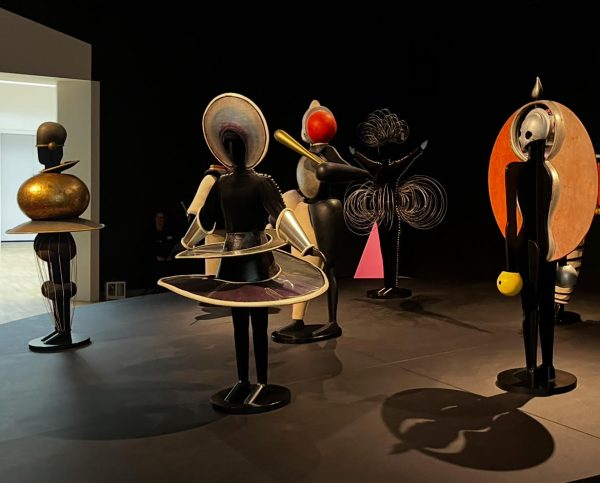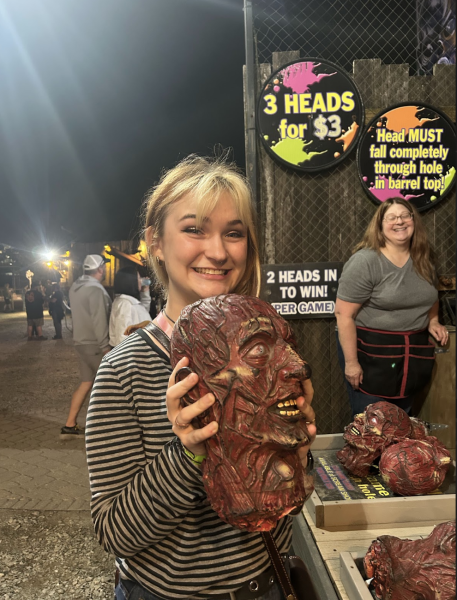The Original Frankenstein and the Horrors of Careless Creation

Photo courtesy of humanities.drury.edu
We all know Frankenstein – that looming monster with green skin, sunken eyes, and a stitched-up skull brought to life through lightning and a mad scientist’s ambition. We see him constantly on the streets at Halloween and the shows through our screens.
But anyone who’s read the 1818 novel by Mary Shelley knows about the inconsistency between pop culture’s adaptations and the original story – and it’s more than just that Frankenstein is the name of the scientist. Personally, reading the novel in Dr. Dougal’s Senior Seminar class (a capstone course for English majors) has given me a whole new perspective on “Frankenstein” as a psychological thriller about irresponsible creativity.
Though Victor Frankenstein’s monster is often viewed as, well, the monster of the story, this monster is known in the novel as “the creature”, and Frankenstein is the one who rejects him the very moment he is born. Though he has spent countless nights studying and stitching together body parts to create this new life, Frankenstein is instantly repelled by his creation’s physical appearance when the creature finally moves. The doctor runs away, praying to never see him again, leaving him to fend for himself. Frankenstein is an irresponsible creator, refusing to accept and nurture what is essentially his child, and it is this very rejection that leads the creature down his destructive path.
Creating art also requires a kind of responsibility. In class, we discussed how a piece of writing or artwork, if not properly researched, can spread misinformation and promote stereotypes that hurt people. As creators, we should think about the effect our work can have on the world. Frankenstein did not think about the effect of abandoning his creation as if he were an object, and the consequences were very, very severe.
The psychological horror of the story culminates in burden after burden that Frankenstein must bear for abandoning his creation. Spoiler warning! As the creature comes to understand his rejection, he takes revenge by killing people close to Frankenstein. Frankenstein can only watch as innocents and those he loves most are murdered for his mistakes. The doctor is tortured, crushed by his grief and guilt. Obviously, it is still the creature committing these acts, but the antagonist’s role is blurred as we understand the creature’s reason for doing so: his utter loneliness, his complete lack of being loved by Frankenstein or anyone else.
Though pop culture often depicts the creature as a groaning, brainless monster, he is extremely eloquent and intelligent in the novel. He and Frankenstein, both having hurt and been hurt, argue about what they think each owes the other, and this relationship between creator and creation is, for me, one of the most compelling parts of the story.
What also stood out was the theme of obsessive creativity. In the two years Frankenstein worked to conceive his creation at university, he shut out everyone and everything. He ignored his family’s invitations (and eventual pleas) to visit home, and he stopped appreciating the beauty of nature. Nothing else mattered but finishing his work.
Again, we can see this as a pitfall of creativity overall. It’s easy to fall too deeply into your work, valuing yourself only for what you can create. Finding that balance between you and your projects, between leisure time and work time, is so important as a creator. In Frankenstein’s case, by making his life only about his creation, he neglects the needs of himself and those who care for him.
I didn’t expect to draw parallels between creating art and creating human beings in our class discussions of “Frankenstein”, but it was so interesting to do so, and I’m very grateful for them. Though I had first read the novel in a middle school English class, I definitely didn’t get the same things out of it as I did here. Being older now, I was also able to make much better sense of the novel’s wordy prose style.
Going back to the original stories that spawned a million adaptations is highly valuable, showing how creative works can become different or distorted over time. While our many interpretations of Frankenstein today aren’t inherently wrong, it’s important not to forget the themes that made the story of Victor Frankenstein and his creature so chilling and compelling in the first place.







